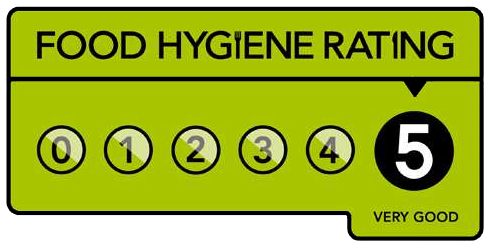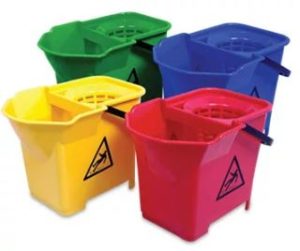
Since that easily recognisable luminous green and black sticker appeared in the window of many food service businesses, the food hygiene rating scheme has become a big deal. But in a time when online reviews and independent forums are widely used to tell the public about real life experiences, does the food safety score really make a difference to people’s dining choices?
The Basics
An initiative by the Food Standards Agency (FSA), the Food Hygiene Rating Scheme (FHRS) as it is known in England, Wales and Northern Ireland, launched in 2010 however Scotland’s alternative, the Food Hygiene Information Scheme (FHIS) underwent a soft launch in 2006 with full roll-out in 2009.
The scheme is aimed at assessing the hygiene and food safety practices of any business that produces, handles and serves food to the public. This includes restaurants, cafes, takeaways and canteens and also covers shops and supermarkets that vend foods. Whilst display of a ratings sticker is mandatory in Wales and Northern Ireland it is only voluntary at present in England and Scotland. This will however become a legal requirement in the future.
The Process
Inspections concentrate on and represent the quality of food handling, hygiene and food safe practices within a business and is not intended for use as a reflection of the quality of the cooking or service that can be expected.
Site visits and assessments are controlled by the local authority. Environmental Health Food Safety Officers attend site and carry out a number of checks regarding three key areas:
- Hygiene and Food Handling
- Condition and Facilities Within the Premises
- Food Safety Management
Marks are tallied for any breaches found in relation to the Food Law Code of Practice (the guidelines used as a standard to regulate inspections), the final score being converted to a rating. It is this rating that will be officially logged in relation to the business and displayed via a sticker.

Ratings are displayed on a grade of 0 to 5, 0 meaning that urgent attention is required and 5 being very good. Although the scale goes up to 5, 0 is a rating in its own right resulting in a total of 6 levels overall. Ratings are scored on a points system – over 50 points being a 0 and between 0-15 points being a 5.
Businesses deemed to have a low rating are instructed to make urgent improvements by a specified date with follow-up visits to monitor progress. Repeated failure to make the necessary improvements may result in the shutting down of the business until required standards are met. Businesses have the right to appeal any decision in writing within 21 days.
Benefits of the Rating Scheme
Since the launch of food hygiene ratings, the scheme has gained more and more traction, holding increasing sway and weight over consumer choices. So why has it proven to be such a success?




What Can Food Service Businesses Do to Comply?
Here are just a few areas that businesses can address to ensure continued compliance with food safety and hygiene standards.
- Ensure food is stored at cooked at correct temperatures to reduce bacteria growth and observe strict food safety. Invest in an accurate thermometer to help.
- All foods must be appropriately sealed, wrapped and labelled stating the contents, storage dates and any other relevant information.
- Observe strict food handling procedures and reduce the risk of cross contamination. Using colour coded equipment is a great way to prevent cross contamination during busy services. Putting a colour coding reference chart on view in the kitchen can be a great way to prompt staff.
- Ensure that all staff receive full initial training and regular updates and refresher courses as to correct practice and food safety. This includes but is not limited to food preparation, cooking, reheating, cooling and storing with emphasis placed on the importance of passing

- Make sure that the premises and all equipment is fit for purpose.
- Put in place and maintain routine cleaning procedures. Using a rota is a great way to tackle the maintenance and cleaning of all areas within the vicinity of food production and a handy way to monitor who has completed which task and when. Pay attention to equipment (both storage and cooking), counter surfaces, walls, floors and ventilation. Don’t limit cleaning to the kitchen alone, pot wash and storage areas should also be included.
- Ensure that effective pest control methods are in place.
- Keep and maintain thorough records and logs of all HACCP, safety and food hygiene related issues including preventative measures employed and any failures in procedures that could potentially pose a risk to the public.
Is the FHRS Still Relevant?
Yes, very much so. These standardised inspections are conducted by impartial and unbiased officials (EHO) giving a genuine reflection of what’s going on behind the scenes in your favourite restaurant or takeaway. While reviews may hold a bit of sway over a customers’ choice of where to eat, they are ultimately based on personal perception. What might be a bad experience for one person, might not be for another. Reviews concentrate more on the customer experience aspect rather than the cleanliness, hygiene and food safety of the premises that the FHRS focuses on.
Many customers attest to consulting a business’s food safety score prior to ordering food or booking a table showing that the scheme really does make a difference to the public’s dining choices.


